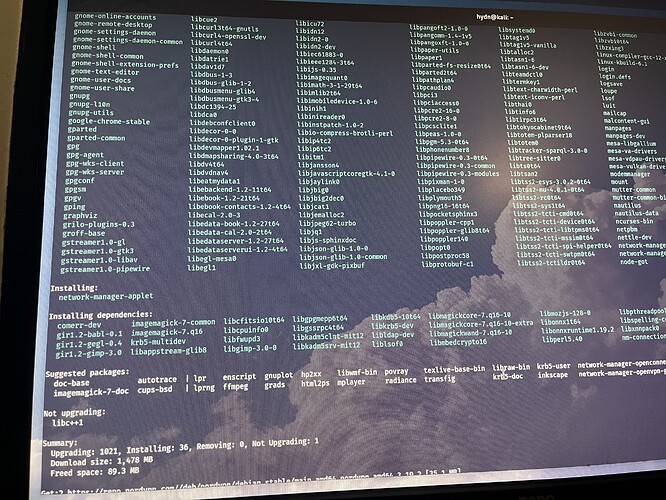![]()
What impresses me about Kali rolling is that I’ve been using it for ~ 2 years on this desktop PC and over a year on my laptop and through all the updates, not a single thing has broken.
Linux is just amazing though, imagine upgrading 1000 packages and installing 30 new ones and at the end using LESS disk space. ![]()
I’m about to replace Kali with Vanilla OS or Fedora Silverblue.
With Silverblue, each version is updated for approximately 13 months, and each update takes effect on your next reboot, keeping your system consistent. You can even keep working while the updates are being applied.
However, you can switch to a Rawhide version of Silverblue if you want to run the development branch (bleeding edge). To do so:
- You can rebase your Silverblue installation to Rawhide using the following command:
rpm-ostree rebase fedora:fedora/rawhide/x86_64/silverblue
Replace x86_64 with your architecture if it’s different.
Now your basically rolling lol.
But, With Vanilla OS, instead of Debian Testing + Oversight of Kali devs. It’s based on Debian SID ![]() + oversight of Vanilla OS devs.
+ oversight of Vanilla OS devs.
But then here’s how they do it:
“Orchid sources its snapshotted packages from the Debian Sid repository, ensuring that packages are always fresh and up-to-date. These packages are used to create an OCI image, which our team meticulously tests to ensure there are no issues. Once an image is approved, it is deployed to your desktop (which uses the stable tag). This process ensures you always receive the latest software while maintaining the stability and reliability of your system.”
It’s a lot to consider. I don’t use or have any of the Kali tools installed etc. So would be nice to find a more “normal” distro. I was thinking about Void Linux, which is also a rolling release, but it’s an independent distro. I want to stick with .deb or .rpm. Which, funny enough, with Vanilla OS you have access to BOTH and more via containerization.
Anyway, enough rambling. Just have a read through here:
and here:
